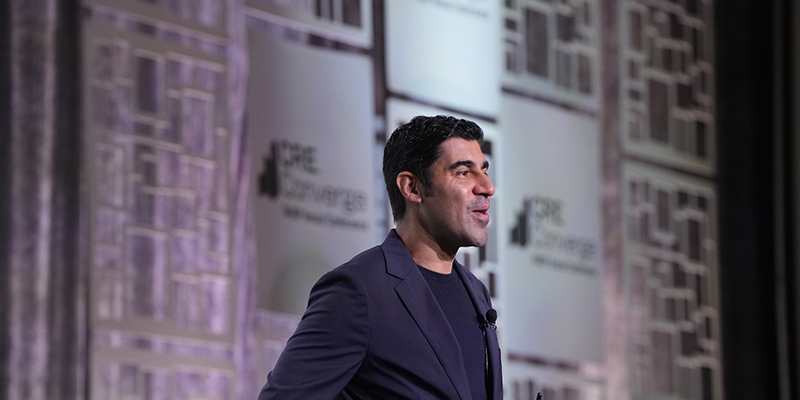“As I was preparing for this session, I thought we should rename it away from an entitlement-focus and instead call it, ‘So You Wanna Be a Developer? What The Heck Are You Thinking?’” said Jeff Milanaik, partner, northeast region, Bridge Industrial, and moderator of a session on entitlement and environmental headwinds at I.CON East this week in Jersey City, with a laugh. Milanaik will also serve as 2022 NAIOP chair.
“There’s no doubt that the entitlement process is becoming more arduous and contentious in some markets. As developers, we think that we already know this process. But sometimes, we can come out of a meeting with a municipality scratching our heads and wondering where it all went wrong,” said Milanaik.
He noted that sites today are increasingly challenging, with greater shifts in location and usage, not to mention environmental and geotechnical challenges and an ever-evolving list of acronyms and mandates that developers need a scorecard to keep track of in the process. So how can developers best navigate these headwinds, and what do economic development agencies expect from developers as they begin the entitlement process?
“That’s a great and complicated question,” said Becky Bradley, AICP, executive director of the Lehigh Valley Planning Commission, noting that many of the challenges don’t come from the developers, but from the partners who have helped provide pieces of a proposal. For example, she said, a design firm will submit a quick design without thoroughly looking at municipal ordinances, so going back to the beginning prolongs the process. “These ordinances are written like checklists, so they should be easy to follow.”
Bradley said her best advice is to hold the professionals doing work for the developer accountable, so that nobody’s time and money is wasted. “Don’t drag it out by not doing the prep work,” she said, noting that the path to achieving approvals isn’t a secret. “We’ve had over 90 million square feet approved in the Lehigh Valley/Northampton market between January and September.”
Milanaik said that developers approach economic agencies with a building proposal by highlighting all that it could do for the community. Milanaik asked the panel whether or not these types of approaches are effective.
Bradley said the conversation needs to be around the net effect of the project, the quality of jobs it will bring, and how it’s going to function. “I know that it’s a challenge because you don’t always know who the end-user is, but that kind of uncertainty can prolong the project,” she said. “At the end of the day, we’re all in the same business and we have to work together. If we approach it from an open perspective, you’re going to get to the ‘yes’ a lot faster. You can come to us for information instead of hiring someone to do this research – we know where the flood planes are, what species are endangered or protected, and how developers can leverage the resources of counties to ease the process.”
From an engineering perspective, James Thaon, PE, associate, branch manager, Bohler, said his team needs to understand the risk and timeline from day one, so that they can know best how to advise a client. “Going into meetings informed is key,” he said. “It’s going to inform how we design and plan the project, and we want to empower developers to go into meetings with knowledge on zoning reviews and the landscape where the development is happening.”
Milanaik explained New Jersey’s recent change to stormwater regulations from the state’s Department of Environmental Protection (NJDEP), which reimagines the way water basins and ponds are located within a project and requires elements of sustainable development. “Across Bohler, we have 28 East Coast offices and some in Texas, and they are all seeing similar things happening in their markets,” said Thaon, noting that such regulations have a tangible impact on cost and yield, with its iterative processes taking more time for planning and construction.
Milanaik asked about sustainable elements in buildings today regaining popularity, partly due to foreign investment. Bradley said that emphasizing sustainability is a big selling point for municipal governments. “If you can naturalize the site, it looks nicer and helps preserves quality of life and offset trucking emissions,” she said. “The more you can do – like adding solar and talking about traffic management – shows that the property is going to be more environmentally friendly and community supported.”
Wanda Chin Monahan, Esq., is an attorney who has worked with Milanaik and his company on entitlement projects for the last 15 years. As she advises developers looking at a project, she guides them more toward problem solving than issue spotting.
“When it comes to environmental contamination and liability protections, they key is to identify; quantify in terms of cost and time; and plan for how you can mitigate or eliminate the risk,” she said.
Milanaik asked her to identify the most efficient steps to get sign off on projects that don’t fit in the traditional “boxes” established by environmental agencies.
“Really, you have to do your homework before you talk to an agency,” Monahan said, almost doing the work for them. “Strategically position your ask or application in a way that makes it nearly impossible to say anything but ‘yes.’” She warned that the homework is beyond looking at regulations and making sure proposal falls within them, and includes understanding internal public policies.
“I think public sector agencies are nervous about saying ‘yes’ to something that doesn’t squarely fit in the box because it may set precedent. Agencies have to give some thought on how your project is unique to this site or set of circumstances so they can reply to others who may want to push the envelope a bit further,” she said.
Milanaik asked: With all the uncertainties and delays in entitlements, how can developers set timeline expectations with their partners?
“Knowing agency’s turnaround time helps, as well as having an easily approvable application,” said Monahan. “Build up a reputation of creditability that helps make your application more desirable to review.”
Thaon agreed that it’s so important that developers establish due diligence periods on real timelines. “It helps the whole team come together and understand the risks and how each of our specific pieces of the puzzle affect the project.”
This post is brought to you by JLL, the social media and conference blog sponsor of NAIOP’s I.CON East 2021. Learn more about JLL at www.us.jll.com or www.jll.ca.









